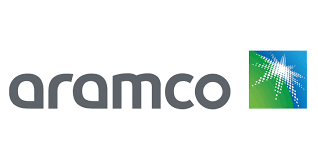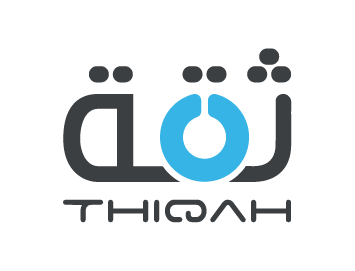Traditional management methods are increasingly falling short in today’s fast-paced, ever-changing markets.
Project delays, rigid hierarchies, and inflexible planning often hinder organizations from delivering value efficiently.
With rapidly shifting customer demands, the need for adaptability is more urgent than ever.
Enter Agile Management—not a rigid set of rules, but a flexible, collaborative mindset built around delivering continuous value to the customer.
Agile doesn’t just help teams respond to change—it empowers them to thrive in it. This guide is your introduction to Agile Management.
You’ll learn what Agile truly means, explore its core values and principles, get an overview of popular Agile frameworks, and discover how to apply it effectively in project and product settings.
By the end, you'll be equipped with practical steps to start implementing Agile in your organization.
Start today by joining Balanced Score Training Center and excel in your professional career.
What is Agile Management? A Foundational Overview
Beyond the Buzzword: Defining the Agile Mindset
Agile is more than just a trendy term—it's a philosophy grounded in collaboration, empowerment, and continuous improvement.
Agile teams focus on small, iterative progress, working closely with stakeholders to ensure that every piece of work delivers real value.
Instead of clinging to a rigid plan, they embrace change as an opportunity for better results.
The 4 Core Values of the Agile Manifesto
The Agile Manifesto, created in 2001 by software development pioneers, outlines the foundational values of Agile:
- Individuals and interactions over processes and tools
- Working software over comprehensive documentation
- Customer collaboration over contract negotiation
- Responding to change over following a plan
These values emphasize people, outcomes, and adaptability over bureaucracy and predictability.
The 12 Principles Behind the Manifesto
While the values provide a philosophical foundation, the 12 principles bring them to life. These principles can be grouped into the following themes:
- Customer Focus: Satisfy the customer through early and continuous delivery of valuable work.
- Delivering Value: Working software (or product) is the primary measure of progress.
- Team Dynamics: Build projects around motivated individuals and trust them to get the job done.
- Simplicity & Feedback: Simplicity—the art of maximizing work not done—is essential, and teams should reflect regularly to improve.
Agile vs. Waterfall: Understanding the Key Differences
Agile is iterative and flexible, while traditional Waterfall approaches are linear and rigid.
Waterfall teams complete all planning before execution, while Agile teams plan as they go, adapting based on feedback.
In Agile, customer involvement is continuous, whereas Waterfall usually reserves customer feedback for the end.
Agile thrives in uncertainty; Waterfall works best in stable, predictable environments.
Join our Strategic Management Courses today.
The Core Benefits of Adopting an Agile Approach
Enhanced Flexibility and Adaptability to Change
Agile teams don’t fear change—they embrace it.
Whether market conditions shift or new customer feedback comes in, Agile allows teams to pivot quickly without derailing the entire project.
Increased Speed and Faster Time-to-Market
By breaking work into smaller chunks, Agile teams deliver functional pieces faster.
This enables quicker testing, learning, and customer feedback, dramatically accelerating time-to-market.
Improved Stakeholder Engagement and Customer Satisfaction
Frequent check-ins with stakeholders mean better alignment with business goals and user needs.
As a result, customers receive more relevant, timely, and valuable solutions.
Higher Quality Output Through Continuous Feedback
Agile promotes frequent reviews and testing, ensuring defects are caught early.
This iterative process results in a more polished, higher-quality product.
Increased Team Morale, Autonomy, and Ownership
Agile empowers teams to make decisions, take ownership, and self-organize.
This boosts motivation, collaboration, and job satisfaction—essential ingredients for high performance.
Key Agile Methodologies and Frameworks
Scrum: The Framework of Sprints and Roles
Scrum is one of the most widely adopted Agile frameworks.
It structures work into time-boxed cycles called Sprints (usually 2–4 weeks).
Key Scrum elements include:
- Daily Stand-ups: Short, daily meetings to assess progress and remove blockers.
- Sprint Reviews: Demonstrate completed work to stakeholders.
- Retrospectives: Reflect on what went well and what could be improved.
Roles within Scrum include:
- Product Owner: Defines the vision and prioritizes the backlog.
- Scrum Master: Facilitates the process and supports the team.
- Development Team: Executes the work collaboratively.
Kanban: Visualizing Workflow and Limiting Work-in-Progress
Kanban focuses on managing workflow visually.
Work items are represented on a Kanban board, allowing teams to track progress and spot bottlenecks.
Core principles include:
- Limiting work-in-progress (WIP) to prevent overload.
- Continuous delivery instead of fixed-length sprints.
- Visualizing workflow to improve transparency and efficiency.
Join our Training courses in Istanbul.
Lean Development: Eliminating Waste and Maximizing Value
Lean Development borrows from lean manufacturing principles.
Its goal is to eliminate waste, maximize customer value, and deliver only what is necessary.
Teams are encouraged to avoid over-engineering and focus on what truly matters.
Other Agile Approaches: XP, Crystal, and More
Agile isn't limited to Scrum and Kanban. Other approaches include:
- Extreme Programming (XP): Focuses on technical excellence and frequent releases.
- Crystal: A family of lightweight methodologies tailored to team size and project criticality.
Each of these, offers tools for specific team contexts and goals.
Agile Management in Practice: Project vs. Product
Understanding Agile Project Management
Agile Project Management applies Agile principles to traditional project constraints—scope, time, and cost.
It’s ideal for initiatives with a clear end goal but evolving paths to get there, such as:
- Launching a software feature
- Rolling out a new internal system
- Running a marketing campaign
Exploring Agile Product Management
Agile Product Management is a more strategic, long-term application of Agile.
The focus is on:
- Managing the entire product lifecycle
- Continuously iterating based on customer feedback
- Ensuring product-market fit remains strong
This approach is common in SaaS, tech startups, and any organization that prioritizes innovation and user value.
Which Approach is Right for You?
If your goal is a one-time deliverable, go with Agile Project Management.
If you’re managing an evolving product with ongoing updates and customer interaction, Agile Product Management is more appropriate.
Contact us today and figure out what the best approach for you is.
How to Implement Agile Management in Your Organization
Step 1: Secure Leadership Buy-in and Champion the "Why"
Before launching any Agile initiative, ensure leadership understands its value.
Share success stories and highlight the business benefits—like faster delivery and improved team performance.
Step 2: Start Small with a Pilot Project or Team
Don't try to transform your entire organization overnight.
Start with one pilot project or cross-functional team.
Learn from that experience, then scale gradually.
Step 3: Choose the Right Agile Framework for Your Context
Not every framework fits every team.
Choose Scrum if your work involves regular iterations, or Kanban if you need to manage continuous flow.
Tailor Agile to your context.
Step 4: Invest in Training, Coaching, and Culture
Agile isn’t just about process—it’s about mindset.
Invest in training for your teams, hire or develop Agile coaches, and nurture a culture that values learning, feedback, and adaptability.
Step 5: Select the Right Tools (Jira, Trello, Asana, etc.)
Agile thrives when supported by the right tools.
Use platforms like Jira, Trello, or Asana to manage tasks, track progress, and foster team collaboration.
Conclusion: The Future is Flexible
Agile Management is more than a technique—it’s a mindset shift that empowers teams to deliver faster, adapt quicker, and innovate continuously.
By focusing on collaboration, feedback, and incremental progress, organizations can navigate uncertainty with confidence.
If you want to build teams that are resilient, customer-focused, and always ready for change, now is the time to embrace Agile.
The future of work isn’t rigid—it’s flexible, empowered, and Agile.
Frequently Asked Questions (FAQ)
1. Is Scrum the same as Agile?
No. Agile is the overarching philosophy or mindset.
Scrum is a specific framework that implements Agile values using Sprints, roles, and ceremonies.
Think of Agile as the "diet," and Scrum as one type of "meal plan."
2. Can Agile Management be used for non-IT projects?
Absolutely. Agile principles are now used in marketing, HR, product design, and even construction.
Any project that benefits from collaboration, iteration, and flexibility can benefit from Agile.
3. What is a "Sprint" in Agile Management?
A Sprint is a short, fixed time period (typically 1–4 weeks) during which an Agile team works to complete a specific set of tasks.
It’s a core feature of the Scrum framework and helps create focus, predictability, and measurable progress.
4. What are the most important roles on an Agile team?
In Scrum, the key roles are:
- Product Owner: Sets priorities and defines the work.
- Scrum Master: Facilitates the process and supports the team.
- Development Team: Executes the tasks collaboratively.
These roles ensure focus, alignment, and continuous delivery of value.
Read more:
How to Choose the Best Change Management Training Courses? Complete guide.



















